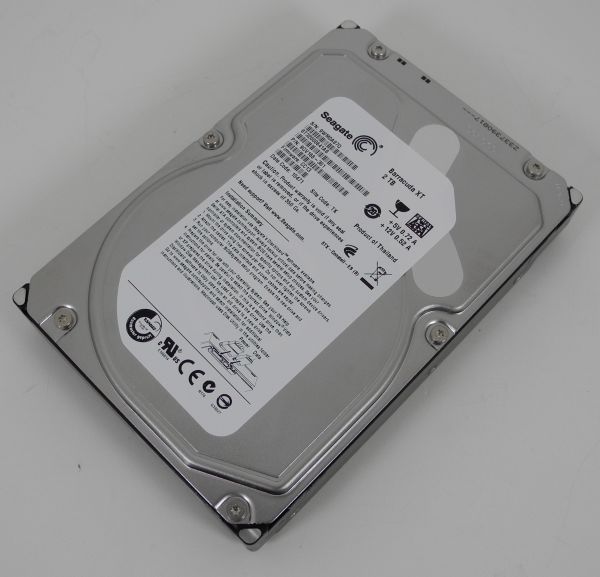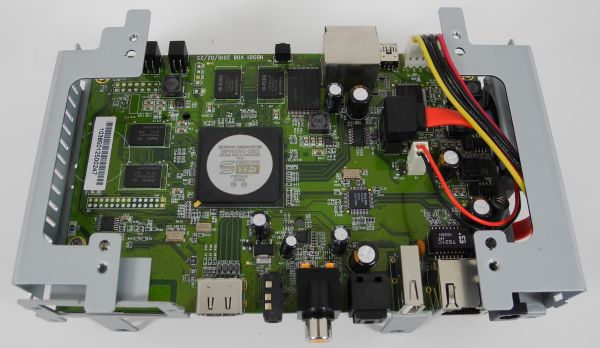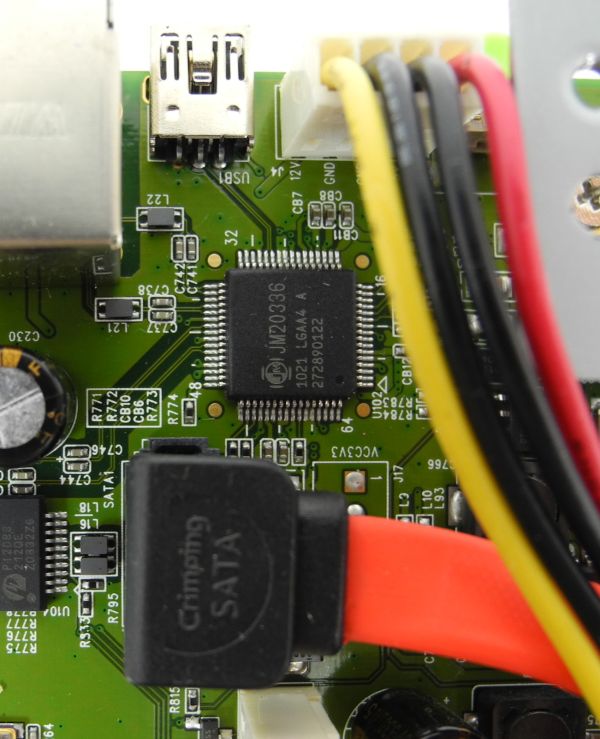Startups in the US media streamer market are not very common. There are a number of small companies (like Micca and Brite-View) active in this space, but media streamers are not their sole products. Nixeus, a Los Angeles based company, was founded in 2010 with the intention of making inroads into the competitive media streamer market.
Their first product, the Nixeus Fusion HD, was introduced towards the middle of 2010. The fulsome praise devoted to it by many AVSForum members encouraged us to obtain a review sample. We have had the unit in our labs for the last 3 months, and we are now finally in a position to write a review after Nixeus fixed many of the bug reports that we filed.
Their first product, the Nixeus Fusion HD, was introduced towards the middle of 2010. The fulsome praise devoted to it by many AVSForum members encouraged us to obtain a review sample. We have had the unit in our labs for the last 3 months, and we are now finally in a position to write a review after Nixeus fixed many of the bug reports that we filed.
Officially priced at $219.99, the unit can be purchased for as low as $179.99 if you shop around. For this price, you get a media streamer with the following features:
- Sigma Designs SMP 8655 (Same as WDTV Live with respect to base features such as 1080p and so on -- Frankly, if a device doesn't do 1080p, we do not want to cover it in the media streamer space here)
- Slot for internal 3.5" hard drive
- Bundled support for both wired and wireless network connectivity
- Usage of unit as an eSATA / USB external hard drive (provided internal hard disk is installed)
There are a number of companies making SMP 865x based products. How do they differentiate themselves? As the experienced media streamer consumers know, it is not the base platform, but the firmware which counts. The amount of development that is done on the base SDK provided by Sigma Designs, and the attentiveness of the manufacturer to the issues of the existing customers decide the quality of the media streamer. Before we get into those details, let us take a look at the package contents and what is inside the Fusion HD.
The host of accessories, as well as the size of the main unit, make the Fusion HD package box pretty big.
Inside the box, we have the following components:
- Nixeus Fusion HD main unit
- 30W power adapter
- IR remote with batteries
- Wireless N USB dongle
- AV cable (3.5mm)
- Ethernet cable
- Screws for internal hard disk mounting
- Setup guide
The main unit has a length of 7.25", width of 5.375" and height of 3.125". The USB Wi-Fi dongle comes bundled with the unit. With support for Wi-Fi Protected Setup (WPS) using Push Button Configuration (PBC), getting the device connected to the wireless network is a breeze. The remote is nothing to write home about, and is of the same quality as those found in other media streamers like the AC Ryan PlayOn HD2. The buttons on the remote feel cheap, but this is nothing out of the ordinary for almost 90% of the streamer units out there.
The front of the main unit has 3 LEDs to indicate the power status, hard disk activity and IR command reception. We have the IR receiver and 1 USB 2.0 host port along with the power switch on the extreme right. In addition to these, we also have eSATA and mini USB 2.0 slave ports which can help the media player act as a DAS (direct attached storage).
The two sides of the unit have ventilation slots and one of them also has a small fan behind it (made necessary due to the internal hard disk capability).
On the rear side, we have the power adapter connector, RJ-45 100 Mbps port, another USB 2.0 host port (best used for the Wi-Fi dongle), optical and coaxial SPDIF, 3.5mm composite video out and the HDMI 1.3 port.
Let us wrap up this section with a table summarizing the A/V and data connectivity options of the Nixeus Fusion HD
| Nixeus Fusion HD | ||||
| Feature | Nixeus Fusion HD Config | |||
| HDMI | Yes (v1.3) | |||
| Component | No | |||
| Composite | Yes (with Audio) | |||
| VGA | No | |||
| SPDIF | Yes (Optical and Coaxial) | |||
| Stereo | No | |||
| Optical Disk Drive | No | |||
| USB | Yes (2 x 2.0 Host, 1 x 2.0 Slave) | |||
| eSATA | Yes (Client) | |||
| LAN | Yes (100 Mbps) | |||
| Internal HDD | Supported (3.5", Not Included) | |||
| WiFi | Yes (300 Mbps Wireless N USB Dongle) | |||
| Card Reader | No | |||
In order to install an internal hard disk, it is necessary to remove the top cover of the Fusion HD. For our review, we used a 2 TB Barracuda XT 7200 rpm provided to us by Seagate.
The top can be taken off by removing 4 screws from the two sides of the Fusion HD, and slightly tugging at one of the sides.
The screws to hold the hard disk in place are provided in the Fusion HD package. The SATA data and power cables make an appearance on the top, and have to be connected to the hard disk properly before being screwed in. Compared to the easy slide in process used by other manufacturers like TViX and A.C.Ryan, this method of installation is a bit clunky, and not really user friendly (Well, it may be OK for the average Tech2in reader). If you are planning to gift this to someone with a hard disk already installed, it shouldn't be much of an issue.
To get to the system board, the rubber bushes at the base of the unit had to be prised off, as shown in the gallery above. The board is placed in the chassis in an interesting manner. With the hard disk on top, the main components of the board are on the underside. You can see the SATA data and the power cables making its way to the top in the flipped board below.
To get to the system board, the rubber bushes at the base of the unit had to be prised off, as shown in the gallery above. The board is placed in the chassis in an interesting manner. With the hard disk on top, the main components of the board are on the underside. You can see the SATA data and the power cables making its way to the top in the flipped board below.
Click to Enlarge
The main components on the board are as below. There are two sets of DRAM modules for a total of 384 MB of DDR2 DRAM.
- Sigma Designs SMP8655AD Media Processor
- 2 x Hynix HY5PS1G1631C x16 DDR2 DRAM Modules (Total : 2 x 1Gb = 256 MB)
- 2 x Deutron MIRA P3R12ErJFF x16 DDR2 DRAM Modules (Total : 2 x 512Mb = 128 MB)
- Hynix HY27UF081G2A 1Gb (128 MB) NAND Flash
- JMicron JM20336 SATA / USB 2.0 to SATA Bridge
The JMicron chip lies between the SATA data and power cable connectors on the board.
The JM20336 is responsible for the eSATA client / USB 2.0 slave interface on the Fusion HD. It acts as a bridge with SATA at one end and another SATA and USB 2.0 port at the other end. The SMP8655 has 2 SATA II ports. One of them is connected to the internal hard disk, and the other end is connected to the JM20336. When the Fusion HD is connected to a USB 2.0 host or eSATA port, it goes into 'eSATA or USB Client Mode'. No media playback is possible in this mode, as the SMP 8655 is busy routing traffic from the JM20336 through its first SATA port onto the second SATA port.
The home screen on the Nixeus Fusion HD is pleasing.
However, things start going downhill once you start navigating the internal menus or try to pull up options when playing media files. Don't mistake me, the UI is completely functional, but the fonts and the appearance are like what graphics used to be on DOS machines in the 1990s. Some of examples of the rudimentary UI during file playback are given below:
I am probably spoilt after seeing the UI of the WDTV Live Hub, the NTV 550 and the Boxee Box in this area, but I really feel Nixeus must improve upon this in their future products.
As can be seen in a couple of the gallery pictures, the Fusion HD has a host of online services such as YouTube, iMedia (Fusion Web Channel) etc. These services are a hit or a miss (like in many other media players which have YouTube access). There is also support for Flickr, Shoutcast and Live365, which definitely work better than the video services.
The other special selling point for the Nixeus Fusion HD is the web browser. This is not usually implemented by other SMP 865x based media streamers.
The other special selling point for the Nixeus Fusion HD is the web browser. This is not usually implemented by other SMP 865x based media streamers.
Unfortunately, visiting any Flash website causes the browser to crash. In fact, I wouldn't advise using the browser unless it is just plain text and pictures on the website you plan to visit. The SMP 8655 platform is not powerful enough for Adobe Flash implementation or running a full featured browser. Unless Nixeus moves away from the Sigma Designs platforms, they should not implement web browsers in their future products.
There is also BitTorrent support, but, frankly, how many users are going to download their copy of Ubuntu using the Fusion HD? That said, I find BitTorrent clients on many media streamers. There must be a market for this feature and consumers must be demanding this probably. Another aspect I liked about the Fusion HD is the extensive support for keyboard and mice (even wireless!) through the USB 2.0 host port. Network setup and shared folder access (both SMB and NFS) were quite straightforward and proceeded without a hitch.
There is also BitTorrent support, but, frankly, how many users are going to download their copy of Ubuntu using the Fusion HD? That said, I find BitTorrent clients on many media streamers. There must be a market for this feature and consumers must be demanding this probably. Another aspect I liked about the Fusion HD is the extensive support for keyboard and mice (even wireless!) through the USB 2.0 host port. Network setup and shared folder access (both SMB and NFS) were quite straightforward and proceeded without a hitch.










0 comments:
Post a Comment